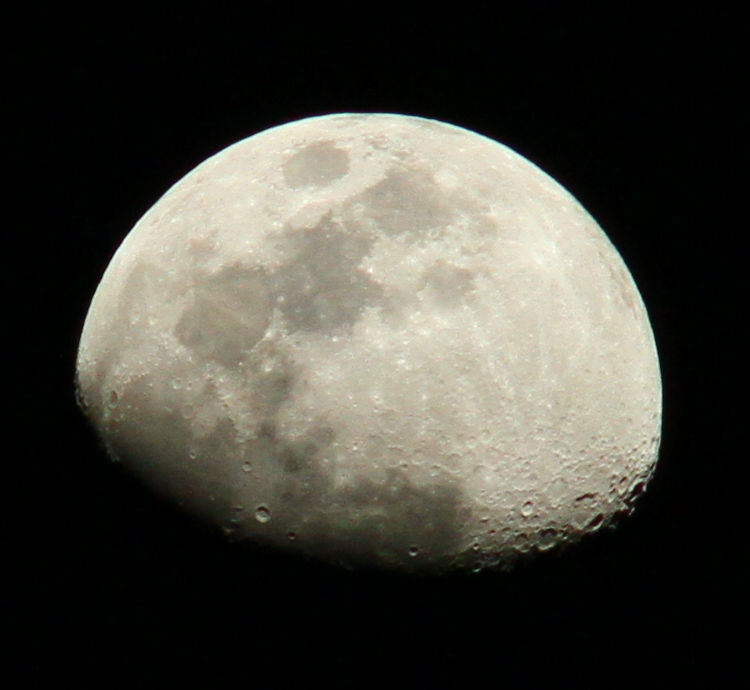I went out again a bit earlier to see if I could spot, and potentially photograph, Comet 12P/Pons-Brooks, supposed to be visible as twilight fades after sunset. Coming in at just under magnitude 6, which is about the minimum to spot unaided, I knew it was too faint for the light pollution in this area, but perhaps I could snag it with a slightly long exposure at high ISO? I plotted the rough location and went over to the neighborhood pond, which has the best view west in the immediate area (I’d need to be looking right around 290°.) And to provide a slight edge, I dug out a Super-Takumar 300mm f4 lens that I got long ago, because while not the longest focal length, it’s definitely the fastest I can lay my hands on right now, and that was the edge I was after.
Yet no exposures that I took showed anything distinctive, and I was having a difficult enough time, once I got back, trying to plot the stars that I captured to know what I had actually framed, to see if the comet was even close. I was purposefully keeping exposures shorter than 1/5 second to avoid as much rotational blur/streaking as possible, and so I’d boosted to ISO 6400. The result was, the faint stars were almost subsumed in noise.
But on my way back, I aimed up at the gibbous moon and did a few frames handheld, dropping the ISO back down to 400. And they’re weren’t too shabby at that.

300mm isn’t going to compare to 600mm with the Tamron, or roughly 1000mm with the Tamron and 2x teleconverter, but I can live with the results, seen here at full resolution (so cropped significantly.) This is 1/250 second at ISO 400, I think f8. The worst part is, the lens requires manual focus but the moon is small enough in the viewfinder to make sharp focus challenging, more so when the lens is stopped down, so several frames aren’t up to snuff.
Back home, I decided to give the same lens a try with the telescope mount and tracking motor again, trying to determine what was happening. This, it’s safe to say, is not what accurate tracking looks like:
![]()
This is a mere 30-second exposure, again at 300mm, so those streaks shouldn’t be there if the motor was working correctly – ideally they should be nice pinpoint stars. I get the feeling that there’s something I’m not doing right with the controller, because I can actually get it to advance and retreat at higher speeds, to help aim the scope, but I can’t get it to maintain the proper speed. There are three buttons: right arrow (which definitely advances the scope along the rotational axis,) left arrow, and one marked, “Speed.” I tried several different combinations and multi-press scenarios, and nearly all of the frames look like this – I think I got two with double-length streaks. I’ve searched online for a manual, but it seems that several different kinds of motors and controllers were offered by this manufacturer (Meade,) and no model number can be found, so as yet I haven’t located instructions or a manual. But the barn-door tracker is in progress and I’ll likely just resort to that. That one, at least, I know I can program to do what I want it to – theoretically, at least…




















































